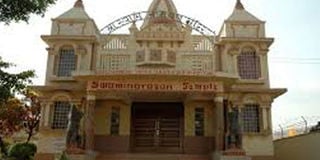Spare historic buildings in towns

There are many stories that can be written or told about old buildings. COURTESY PHOTO
What you need to know:
- Towns such as Entebbe, Jinja, Kampala, and Mbale, among others, were established as colonial administrative centres.
- Commercial and residential areas in the towns were well gazetted and all plots sat on land that were easily served by the sewer and piped water lines in addition to power supply from the national electricity grid.
As urbanisation spreads in Uganda, the country, especially in towns, is fast losing the old structures, buildings and sites that have existed a long time. Many of the structures were put in place by the colonialists an Indian traders. While the colonialists developed administrative centres, the Indian traders built towns for commercial purposes.
Towns such as Entebbe, Jinja, Kampala, and Mbale, among others, were established as colonial administrative centres. Commercial and residential areas in the towns were well gazetted and all plots sat on land that were easily served by the sewer and piped water lines in addition to power supply from the national electricity grid.
There are many stories that can be written or told about the old buildings in these towns. Jinja Town is a glowing example of such towns in Uganda. The town was developed by Indian traders - the reason the Indian architecture still stands prominently in the town to date. One of the first double storeyed building in Uganda, built and owned by the Madhivani family in 1911, is in Jinja Town. This is a historical fact about the town that many people may not know.
These buildings were constructed using high quality materials consisting of rare woods from old growth forests in the country that have since disappeared.
Old structures appeal to especially the older generation of people as it helps them to rekindle their memories. Cities in the developed world preserve protect their old structures. So-called structures are established, but without tampering with the old ones.
Stylish old structures have many advantages, including attract people from all walks of life, who want to have the feel of them so as to compare and contrast with modern buildings that are characterised by glass ventilators, windows and doors.
For instance, materials that were used to build old structures are far superior to the tonnage of cement and tiles used in building modern structures. Their awkward designs, mixture of styles, awesomeness, etc, constitute something to write home about the old architecture.


